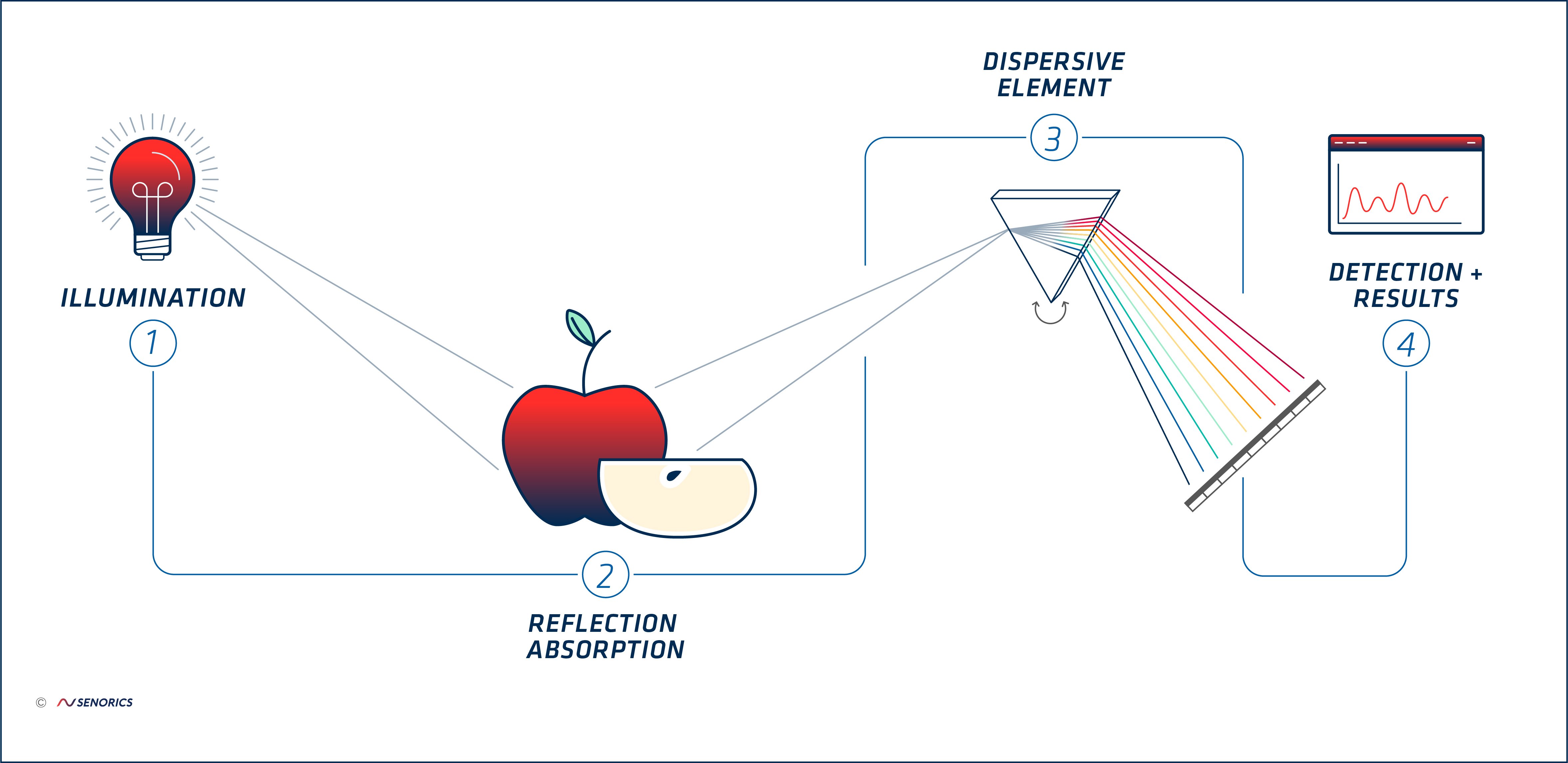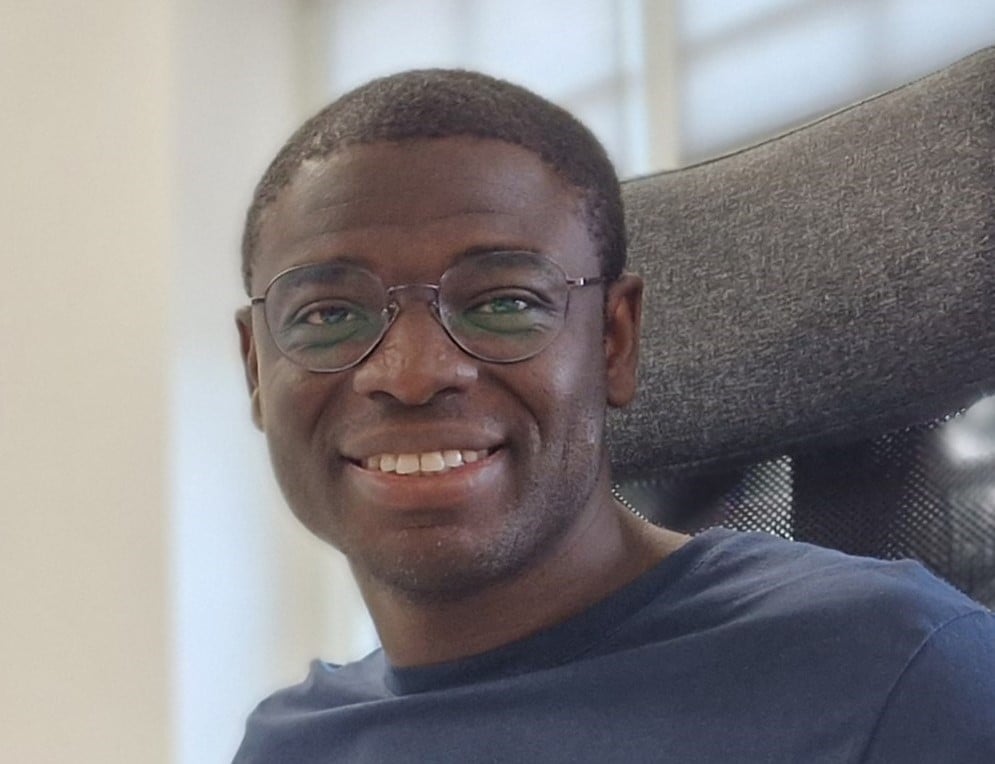To conduct spectroscopy with commercially available technology, a conventional dispersive element, like a prism or a grating, is required to separate the reflected or transmitted light into its spectral components. With our technology it is possible to conduct spectroscopy, or more precisely Material Sensing, without conventional dispersive elements.
In this article we will give you a better understanding of these two different methods. We will explain to you step by step how spectroscopy is conducted in commercial laboratories and how it can be done more easily using our technology.
Spectroscopy with conventional dispersive elements
Dispersive elements have been used in spectroscopy for decades. A classic example is a prism, a triangular object made from glass.
 © [miladrumeva] / Adobe Stock
© [miladrumeva] / Adobe Stock
If white light enters the surface of the prism, it will be refracted and dispersed into its spectral components. This leads to the incoming white light being split into the colors of the rainbow, as illustrated in the sketch. You can learn more about this phenomenon by reading up on Snell’s law.

To obtain the spectroscopic information of an object, the following 4 components are required.
The appropriate illumination
This can be a broad band light source which radiates light and interacts with the object. It could also be a light source that only covers a certain spectral range, such as near-infrared light when conducting NIR spectroscopy.
The object of interest
The object interacts with the light, leading to absorption, reflection, and transmission. In the sketch above, the apple is the object of interest
The dispersive element
In spectroscopy, reflected or transmitted light is analyzed. For that to happen, the light needs to be split into its spectral components and directed to a detection unit where it is measured.
The detection unit
A detection unit receives the reflected or transmitted light and converts it into an electronic signal which can be measured precisely. Analyzing the spectral components enables the identification of the object’s composition.
Spectroscopy without conventional dispersive elements
In contrast to the established methods, we invented a sensor which consists of detectors that are sensitive to specific wavelengths. The main advantage is that the wavelength selection and the measurement happen within the same device.
This leads to our solutions being much smaller and more robust than conventional spectrometers. Our sensor doesn’t need any moving optic components, which is one of the main reasons why it is ideally suited for small and mobile Material Sensing applications.

With our sensor solutions and the omission of conventional dispersive element, the foundation for a new era of Material Sensing is laid. Moving it out of the laboratory, and into people’s pockets, homes, and workplaces.
Watch the video of our CTO Dr. Robert Brückner explaining how exactly our sensor works without a conventional dispersive element.




